In December of last year, Barack Obama became the first president to write code. A video of the digital milestone shows the president in the White House surrounded by eager middle-school students from New Jersey, carefully tapping out a single line of Javascript on a laptop keyboard. In this symbolic feat he has far surpassed his predecessors; Bill Clinton sent the first presidential email in 1999.
The code that Obama typed, “moveForward(100);” is simple—it creates a single, 100-pixel line in the digital firmament. But it’s an important stepping stone not just for students but the president himself, who has made a point of pushing for technology in schools. “STEM education, huge priority,” he told the Silicon Valley news website Re/code in February. “Everybody’s got to learn how to code early. Our school systems aren’t doing as good of a job on this, period.”
I recently watched another group of young students, a dozen elementary school girls ages seven to 10, type out the same line of code as Obama. “Yay, this is so fun!” a redheaded second-grader named Daphne shouted out as a thin black line appeared on her screen.
But these kids weren’t in school. They were at a small technology education nonprofit in suburban Connecticut on a Friday evening. The local public school system, in contrast, hosts just a single computer science class, only available for high school juniors.
“Learn to Code” might have become an economic and political mantra, but the United States’ education system has failed to catch up with the changing demands not only of the job market but also the interests and capabilities of its students, who have already made their lives online. To fill this technology education gap, small, semi-private institutions are emerging—including Detroit’s OmniCorp hackerspace and pop-up workshops at libraries in Cleveland and elsewhere—while public schools continue to founder.
In an era of omnipresent social media and billion-dollar apps, it seems all but indisputable that we should be learning to code as soon as possible. Just who will teach us, however, remains undecided. Will it be schools, or might the answer come from these ad-hoc solutions, emerging, much like Silicon Valley’s tech behemoths once did, out of the garages and basements of suburban America?
If coding still isn’t positioned as a normal practice, integrated into every school curriculum, then it will remain in these self-selecting spaces, available only to students who have the access, time and resources to commit to them. But even with their localized reach, these grassroots solutions have a unique advantage precisely because they do exist outside of schools, creating an independent, supportive environment outside the norms of the classroom.

The space hosting the programming class described above is run by my father, Paul, a career chemical engineer, in my hometown of New Milford. It’s an experiment that grew out of a childhood basement filled with LEGO robots into something of a local institution bearing the un-startup-y name of Robotics & Beyond. It recently turned 10 years old, and now occupies a one-room classroom in an office building near New Milford’s one-block downtown. The room is crowded with bins of LEGO kits and aging computers arrayed around a central table made by hand out of plywood and two-by-fours. Local students of any age can be dropped off there by bus for an after-school program that will teach them how to build robots, wire circuits and, of course, write code. Or they can arrive on a weekend to rip apart some old gadgets under adult supervision. Or schedule a Minecraft-themed birthday party, a popular offering.
The organization has served more than 700 students more than 19,000 hours of education time, drawing kids from wealthier regions of the state out to New York City itself. Yet the classes remain relatively affordable; individual sessions start at $15 and a full semester of weekly afterschool classes runs $330, for a program that will all but guarantee more technology education than exists in the majority of public schools. Tuition assistance and grants are available for any student in need, and several classes are run specifically for children on the autism spectrum. The hundreds of kids that pass through the space these days are mostly drawn by word-of-mouth and through friends (the Minecraft parties help).
When Robotics & Beyond started, however, it was just me, my father, another partner and a few of my friends messing around with LEGO motors in the rec room of a local church. We did a pilot program when I was 13 years old that developed into the organization’s first summer camp in 2004 first hosted at the church, then an art center, then New Milford High School itself as the group outgrew each space.
“It was like being in the rapids and just hoping we could keep paddling,” my father told me.

The operation is still run on a shoestring. Fees from students go toward paying teenage mentors, who act as digital lifeguards for younger kids in between hanging out and talking about their own projects, as several were when I visited. A Makerbot 3D printer buzzing in the corner of the space was sponsored by a local hospital. Classes are run by volunteers with professional experience, like Doug Farrell, a middle-aged senior web engineer at Shutterfly, who taught the programming classes I sat in on.
Bearded and stout with bright, lively eyes, Farrell put me in mind of a computer Santa Claus as he led the girls, who awaited his instructions patiently as they worked to draw a flower shape on their screens using Python code. (The exercise is akin to Javascript’s iconic “Hello World” as a basic lesson.) Farrell’s volunteering is partly activist. “I’m concerned about the lack of technical skills in the country and the poor showing we have for teaching engineering,” he later told me. “We’ve done this generation a terrible disservice with No Child Left Behind. Engineering is a combination of science and art—teaching to the test fails at that.”
But the lessons are also practical, coming as they do from Farrell’s business experience. He uses the same Python code the girls wrote to manage the flow of data at his day job, turning photos uploaded online into printed books and other products. “Python is a salable skill,” Farrell said. “I don’t think there are very many teachers who are able to teach programming well because they don’t know it themselves, so they’re reliant on the book or the curriculum. If the things fail they don’t know how to fix it.”
Code written by second graders often needs a lot of fixing, but the concepts were coming across. Python uses a module called Turtle, which indeed looks like a tiny digital turtle, to draw, first a single line and then a square as Farrell guided his students through their lesson.
“How do we get our flower?” Farrell asked.
“You rotate the turtle a little bit and then have it draw the box?” one student correctly ventured. The flower is made up of multiple boxes spun around a single central axis as the turtle quickly loops, tracing the line behind it.
For kids not quite caught up, a cherubic-but-wan, bespectacled high school senior named Ari Elfenbein circled the table. He first came to Robotics & Beyond two years ago to take a class on Minecraft modding, then eventually graduated to mentor status. “If they had something like this when I was 10, it would’ve been so much better,” he told me. Elfenbein already took computer science in school, but the curriculum doesn’t go beyond an introduction. “Until schools actually have it, this is probably the best way I could think of to do it,” he said. “It’s a place for kids who are interested to come and learn this stuff.”
“Oh, I see the turtle! That’s funny,” a student exclaimed. “We’re going to draw that entire thing? That’ll take forever,” another girl sighed. The class continued and a dozen tiny turtles danced around the screens.

That private schools like Manhattan’s Avenues (“The World School”) employ a chief technology officer while many public schools can barely afford to maintain a computer lab underlines the country’s need of a systematic update to technology education. One initiative trying to correct the situation is Code.org, a nonprofit that supported Obama’s coding lesson. Hadi Partovi, a serial Silicon Valley entrepreneur who grew up in Iran, founded the organization after he realized that “the programming I learned on my own is not being taught in most of the schools in the United States,” he said.
Code.org is an online analogue to Robotics & Beyond’s classes, but on a massive scale. It served more than 20 million students in 2013 alone, a quarter of America’s student population. In 2014, it will train 15,000 teachers to teach code in schools around the country over the Internet and at local training centers, according to Partovi. “Your existing teacher can teach one class as long as 25 kids are interested,” he said. “The curriculum is free; it’s a zero-cost proposition for the school.”
Small-scale operations like Robotics & Beyond “are great,” he continues, “but I hope we don’t depend on that Band-Aid as a permanent solution. Every child in the world doesn’t go to hacker spaces. Underserved populations will get left behind.” Hence Robotics & Beyond’s monthly girls-only coding classes. Though they’re not as popular as the open sessions—girls still only make up around 15 percent of the space’s students as a whole—the designated classes create a more encouraging atmosphere that’s paying off as the girls’ coding and summer camp sessions grow each year. This past January, Code.org boasted of signing up one million girls and one million African-American and Hispanic students for their virtual lessons, though the platform lacks the mutually reinforcing effect of getting these students together in a room.
Still, systematically diversifying tech remains an uphill struggle. It’s easy to understand Partovi’s desire for an all-encompassing, decentralized solution—a “platform,” in Silicon Valley parlance, that can deliver to the country the technology training it so desperately wants. But it’s precisely Silicon Valley’s biases that can put a damper on Code.org’s effectiveness. Entrepreneurship is still a self-selecting career path—only four percent of venture capitalists are women. Startups can also be just as insular and self-reinforcing as well-funded private schools. The race and gender gap in technology is real, and top-down change isn’t coming anytime soon. A true fix will eventually look outward, embracing any and all solutions both physical and virtual.
What’s striking about the extra-curricular spaces for technology education is that they provide a working alternative to both public school systems and private, self-selecting institutions, fleshing out an important “third place” for the technology education ecosystem, though by no means repairing it wholesale. Progressive change is always slow, particularly against the gradient of inequality. And if we have learned anything from all-encompassing platforms like Uber, it’s that they can often exaggerate inequality rather than lessen it.

I often take my fluency in technology for granted. Both my parents worked in engineering, and I fit the white male demographic mold that’s already dominant in the tech industry. What’s missing today is not necessarily the opportunity to learn to code on the Internet—where young users are already accustomed to finding their own ways to do things—but rather the role models and supportive, tight-knit communities that both help kids learn how to code and keep them focused on it even when the odds are against them. Knowing the mechanics is only the first part of the game. The rest of it is finishing school, practicing interviews, finding the right connections to employers, getting jobs and knowing how to excel in them. Silicon Valley entrepreneurs like Partovi and his social network already have these advantages; the vast majority of Americans do not.
At a place like Robotics & Beyond, or any number of garages, basements and hacker spaces around the country, students are more likely to find not just coding lessons but networks of support from fellow nerds: other students, formal mentors and adults already in the industry. These are the people who will usher them into programming not just as a hobby but a lifelong vocation.
Schools are not yet prepared to take on computer science in the way that Partovi desires, in part because technology education is still a niche pursuit that requires a particular environment to thrive. Alternative spaces can provide a freedom that school extracurriculars, which lean heavily toward sports, often lack. Outside of the classroom, “there’s none of that stigmatization, peer pressure or self-consciousness about what kids are doing or learning,” my father said.
“Our lead will erode if we don’t make some good choices now,” Obama told Re/code. Those choices involve changing not just the structure of technology education in schools but our attitude toward it as a whole. A “full stack” educational system including multiple formats and spaces to provide technological training will give a diverse group of students both the opportunities they lack and the strength they need to follow through on them. Above all, schools might borrow a quality from small hackerspaces by working to become places where creativity and passion come first.
Kyle Chayka is a writer in Brooklyn. He covers technology and culture for publications including Newsweek, Gizmodo, and Matter.





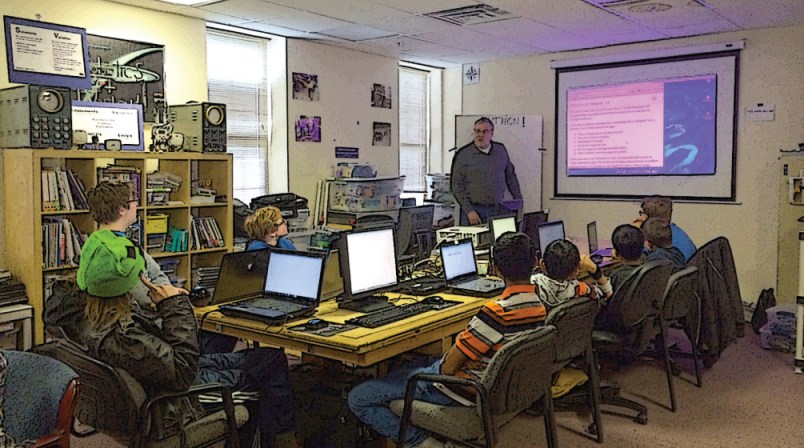
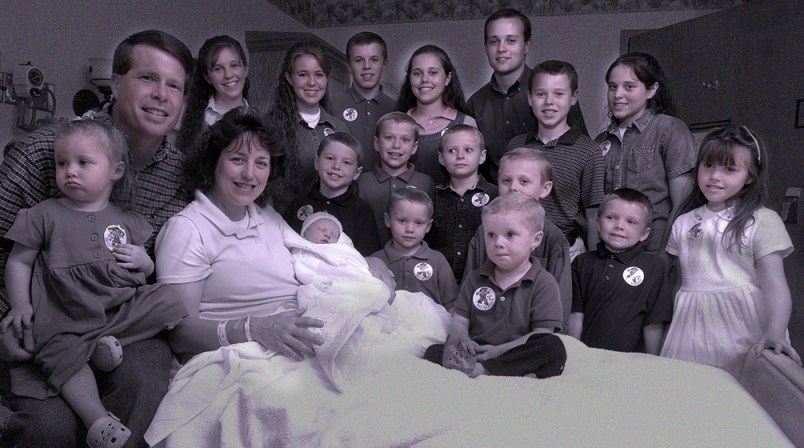
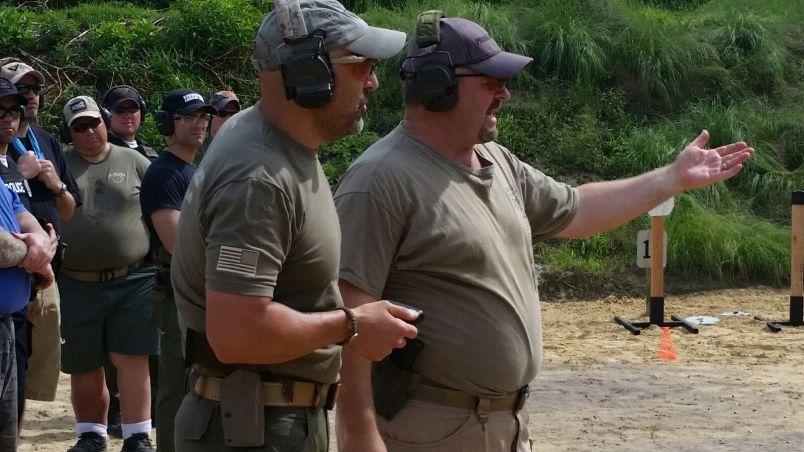
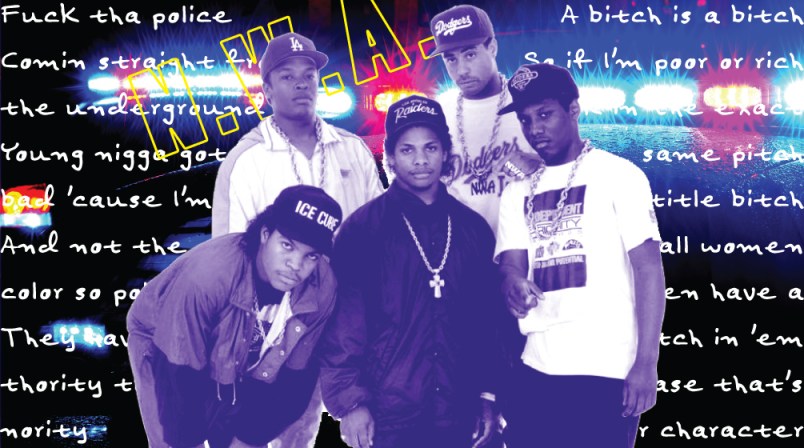
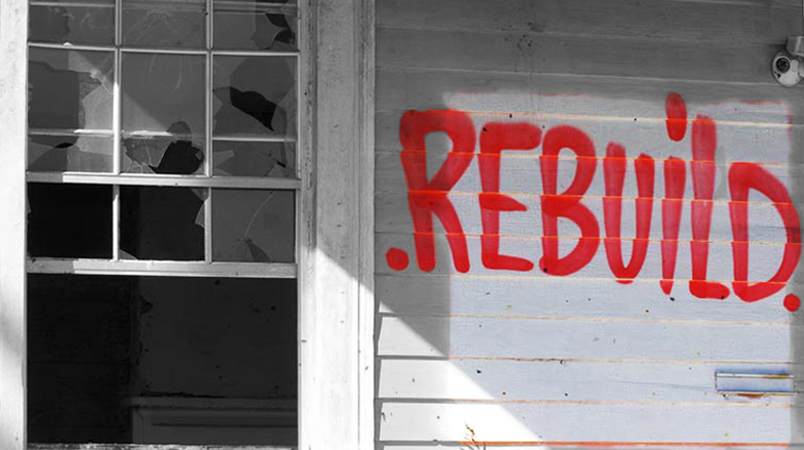
" The space hosting the programming class described above is run by my father, Paul, a career chemical engineer, in my hometown of New Milford. "
No agenda here at all, move along.
" Outside of the classroom, “there’s none of that stigmatization, peer pressure or self-consciousness about what kids are doing or learning,” my father said. "
So let’s just go all in…no more stigmatization regarding mathematics, reading, or writing either. Same with history, all that horrible peer pressure on school children to try and understand the past. Oh hell, lets just abolish public schools entirely because they only exist to make kids self-conscious.
Seriously, this has to be one of the most bizarre “articles” I have seen TPM publish. A special interest cry to do away with public education?? So we can turn it over to the author’s father and his ilk?
That is a pretty steep “relatively” given the number of kids in under-served schools that can barely afford lunch everyday. Not to mention unless they are running a shuttle service it completely ignores the non-tuition costs involved such as transportation from school to the program or the possible time it would take from a parents work schedule.
For all it highlights about the work being done outside the school system to educate kids in coding, I’m not seeing much in the way of an argument for “Keeping it out of the Classroom.”
NOT EVERYONE NEEDS TO “CODE”!!!
Sorry for yelling, but for fuck’s sake, the world does NOT revolve around writing programs! Software is a component of many of life’s convenient technologies, but that doesn’t mean we all need to know how to write it!
I guess maybe it could be a little like Shop Class or Home Ec. We learned to type and sew and basic carpentry, so why not basic BASIC I suppose, right? It doesn’t need to be a frikkin’ core curriculum though! There’s WAY more to life than embedded systems.
But corporations need more coding drones so they don’t have to pay them as much.
Disappointing headline seems to reveal the motivation for the author. Look, there is nothing special about going “out of the classroom” when it comes to learning how to code. Coding can be learned in a classroom environment as much as any other kind of education. It is a bit silly to wait for kids to reach high school. Most tech-savvy kids start programming in elementary school.
The article presents no argument as to why coding should be kept out of the classroom. Should we also keep math out of the classroom? Reading? Writing? Should we just give up on education altogether?
Is this article just an advertisement for a niche business model? That’s what it feels like to me.
Look, if I’m tasked with teaching students how to program, this is something I can do whether I’m doing so in a public school, a private lab, or anywhere else. Anybody who argues that the setting matters must have some kind of agenda.